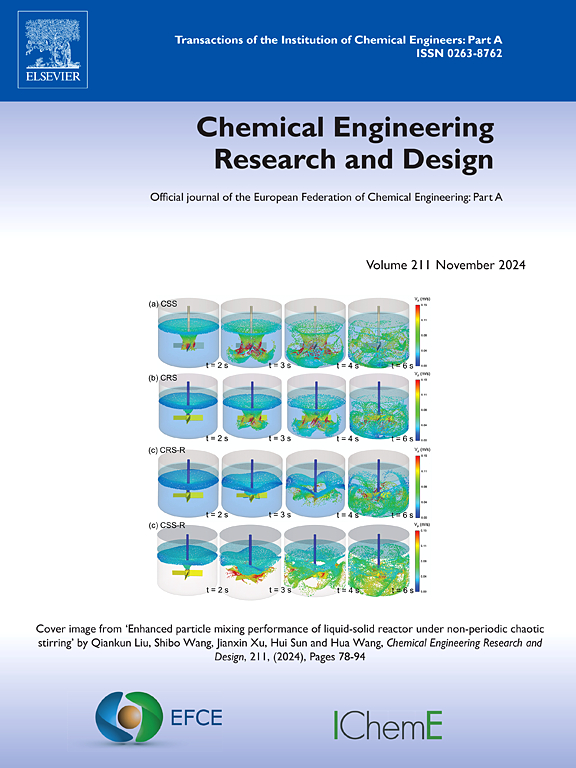微波辅助合成的γ-AlOOH/还原氧化石墨烯三维纳米复合材料在高效吸附环丙沙星中的结构-性能关系探析
IF 3.7
3区 工程技术
Q2 ENGINEERING, CHEMICAL
引用次数: 0
摘要
本文章由计算机程序翻译,如有差异,请以英文原文为准。
Insight of structure-property relationship of microwave-assisted synthesized γ-AlOOH/reduced graphene oxide 3D nanocomposites in efficient adsorption of ciprofloxacin
The structural attributes of adsorbent affect its internal pore structure, specific surface area and surface chemical properties directly, and then affect its adsorption performance. Herein, γ-AlOOH/reduced graphene oxide (rGO) 3D nanocomposites with different morphology structures were obtained following a one-step microwave-assisted hydrothermal strategy. Ciprofloxacin (CIP) adsorption experiments were performed to investigate the relationship between adsorption performance and structural properties of the products. The adsorption performance of the γ-AlOOH/rGO nanocomposites were influenced by morphology, specific surface area and pore volume. Cl-AlOOH/rGO and N-AlOOH/rGO which possessed the similar morphological structure followed Elovich model well, but the kinetics adsorption behavior of S-AlOOH/rGO could well be elaborated by the pseudo-second order model. Cl-AlOOH/rGO with the highest specific surface area (203.48 m2/g) and pore volume (0.216 m3/g) exhibited the highest the maximum adsorption capacity of 930.0076 mg/g. A multiple adsorption mechanism concerned with hydrogen bonds, π-π interaction, pore filling, complexation and van der Waals force was proposed. Benefiting from their 3D structures, all the products showed excellent reusability. This work not only gives valuable insights into the impact of structural attributes, but also provides a new thought for engineering and preparing new-type of adsorbent.
求助全文
通过发布文献求助,成功后即可免费获取论文全文。
去求助
来源期刊

Chemical Engineering Research & Design
工程技术-工程:化工
CiteScore
6.10
自引率
7.70%
发文量
623
审稿时长
42 days
期刊介绍:
ChERD aims to be the principal international journal for publication of high quality, original papers in chemical engineering.
Papers showing how research results can be used in chemical engineering design, and accounts of experimental or theoretical research work bringing new perspectives to established principles, highlighting unsolved problems or indicating directions for future research, are particularly welcome. Contributions that deal with new developments in plant or processes and that can be given quantitative expression are encouraged. The journal is especially interested in papers that extend the boundaries of traditional chemical engineering.
 求助内容:
求助内容: 应助结果提醒方式:
应助结果提醒方式:


